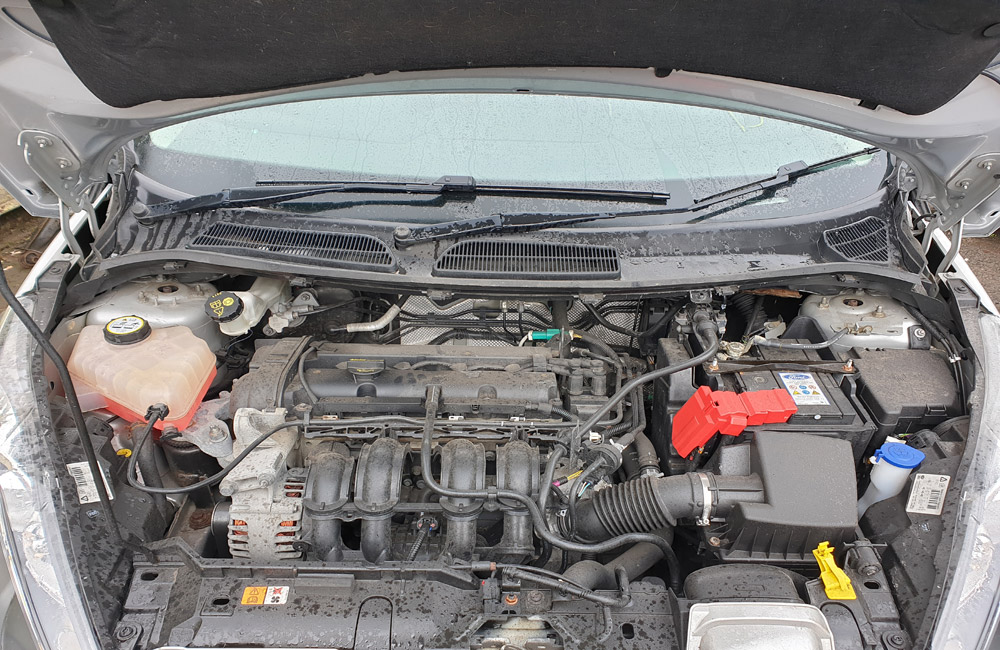Common Issues with the Ford Fiesta Engine and How to Fix Them
Common Issues with the Ford Fiesta Engine and How to Fix Them
Blog Article
Checking Out the Evolution of Engines: From Traditional Layouts to Modern Marvels
From the initial vapor engines that powered the Industrial Change to the introduction of interior combustion engines that changed wheelchair, each phase has actually added to higher efficiency and capability. As we check out these turning points, one must take into consideration how the future of engine layout may unfold, challenging our perceptions of power and performance.
The Birth of Engine Modern Technology
The introduction of engine technology noted an essential moment in human innovation, changing power conversion and transportation. The earliest engines arised from the need to harness mechanical power for practical use, leading to the development of gadgets that transformed different energy forms right into movement (ford fiesta engine).
The growth of the internal burning engine and the development of the steam engine militarized a profound shift in industrial abilities. These engines not only enhanced efficiency but additionally increased the range of human flexibility, making it possible for extraordinary transport opportunities. The very early prototypes laid the groundwork for the mechanical globe, promoting the rise of sectors and reshaping social frameworks.
As engine styles progressed, they integrated ingenious materials and progressed engineering concepts, leading the means for modern-day growths - ford fiesta engine. The birth of engine innovation ignited a relentless search of effectiveness and power, establishing the stage for the vibrant advancement of transport and industrial equipment that would follow
Heavy Steam Engines and Their Impact

The steam engine's effect was specifically apparent in the transport field (ford fiesta engine). Steam-powered engines helped with the quick motion of items and people throughout large ranges, efficiently shrinking the geographical obstacles that had formerly prevented trade and communication. Steamships reinvented naval traveling, permitting for quicker and more reputable crossings of rivers and seas.
In market, steam engines powered factories, allowing mass production and the rise of urban facilities as centers of economic task. Steam innovation promoted technologies in engineering and production processes, laying the foundation for future improvements in engine style.
The Rise of Internal Burning
Often outweighing steam power, the increase of interior burning engines marked a transformative change in transport and sector during the late 19th and early 20th centuries. The growth of these engines, characterized by their capacity to burn fuel within the engine itself, made it possible for higher effectiveness and power compared to traditional vapor engines. Introducing inventors such as Nikolaus Otto and Rudolf Diesel played important duties in perfecting engine designs, leading to widespread adoption in cars, watercrafts, and industrial equipment.
The interior burning engine's compact dimension and fairly light-weight nature assisted in the emergence of individual cars, changing private wheelchair and improving urban landscapes. By allowing faster travel and the efficient transportation of items, these engines catalyzed financial development and cultivated globalization. The versatility of gas alternatives, consisting of gas and diesel, better boosted their appeal, permitting varied applications throughout various fields.
In spite of the ecological problems that would later on arise, the initial allure of internal burning technology lay in its transformative potential. As culture embraced this innovation, the structure was laid for modern transport systems, developing inner burning engines as a foundation of commercial innovation and everyday life throughout the 20th century.
Innovations in Engine Performance
As internal combustion engines ended up being important to transport and industry, the emphasis changed towards boosting their efficiency to fulfill growing needs for efficiency and sustainability. Developments in engine layout, material scientific research, and technology have dramatically contributed to this development.
One major innovation is the growth of turbocharging, which permits for enhanced air consumption, resulting in even more full gas burning and improved power result without enlarging engine size. In addition, variable shutoff timing systems have actually been executed to enhance engine efficiency have a peek here across numerous RPM varieties, thus boosting gas effectiveness.
The utilization of advanced gas shot technologies, such as straight injection, has also played an essential function. This approach allows for more precise control over the fuel-air blend, promoting far better burning and minimizing emissions. Lightweight materials, including light weight aluminum and composite parts, have actually been embraced to decrease total engine weight, leading to enhanced performance.
These improvements reflect a broader fad within the vehicle industry, where the harmony in between engineering development and ecological factors to consider drives the recurring pursuit for greater performance in interior combustion engines. Therefore, contemporary engines are now a lot more powerful, cleaner, and efficient than in the past, leading the way for an extra lasting future in transportation.
The Shift to Electric Power
With expanding worries over ecological influence and nonrenewable fuel source dependency, the automobile sector is experiencing a considerable change towards electrical power. This transition is driven by a mix of technological developments, regulative pressures, and transforming customer preferences. Electric automobiles (EVs) offer a compelling choice to standard inner combustion more engines, boasting lowered greenhouse gas discharges and lower operating costs.
The surge of battery technology has actually been a game changer, with lithium-ion batteries becoming extra reliable and economical. Boosted energy density and faster billing capacities have made EVs more sensible for day-to-day use. Federal governments worldwide are implementing motivations and establishing ambitious targets for phasing out fossil gas automobiles, thereby speeding up the adoption of electrical power.
As billing framework expands and battery technology continues to enhance, the change to electric power is poised to reshape the automotive landscape, promoting sustainability and advancement in the years to come. The future of transport is electric, and the momentum is undeniable.
Conclusion
The evolution of engine innovation stands for a significant trajectory of technology that has exceptionally affected transportation and sector. From the fundamental heavy steam engines to the transformative internal burning engines, each advancement has actually contributed to improved flexibility and economic growth.

Report this page